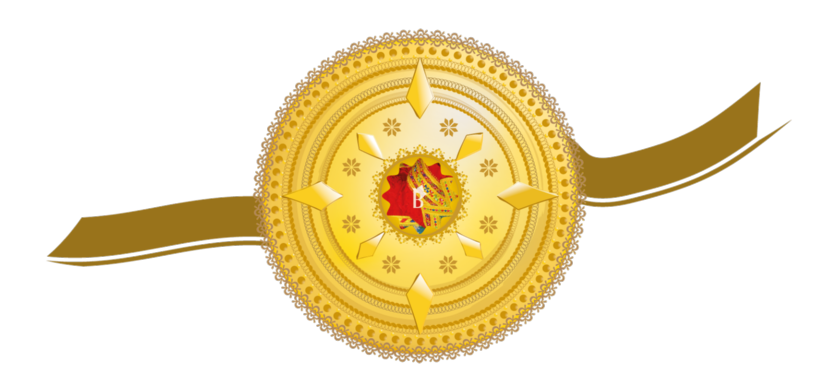Large sunny spaces protected by the highest mountains of the Island represented a safe refuge for the ancient peoples who settled in the territories of Desulo since Neolithic.
The numerous finds of obsidian, which accounted for treasured artifacts of everyday use, and the ceramic ruins, (including the beautifully decorated jug of Monte Corte) discovered in S’Iscra, are evidence of the civilization that lived in the caves and who built the spectacular burials called domus de janas. Some of these sites are still visible to the south-west of the town like the two domus di Occili on the border with Belvì.
In the Bronze age an important nuragic settlement was founded on the outskirts of the cliff Toni de Girgini: here are kept the ruins of the necropolis of Sa Tanchitta, formed by several burials including le tombe dei giganti of Sa Sedda de Sena, and the appropriations in the locality of Genna de Ragas and Sa Tanca Manna in which is still visible the base of the Nuraghe Girgini. Not far from the town, are the Nuraghi of Calavrige, and Ura de sole (Bruncu Nurage) that, at the height of 1,331 meters, is the highest of the entire Island of Sardinia.
The first documents showing the name of the current town center date back to the Twelfth Century: The condaghe of Santa Maria in Bonarcado is referred to as the center of “Esule”.
In the Middle Ages it was part of the Giudicato of Arborea and was included in “curatoria” of the Mandrolisai. Among its habitants, who enjoyed a good autonomy, were chosen warriors for the Giudicati army. In the course of the war between the Sardinian and Iberian Kings, giudicessa Eleonora D'Arborea's husband, Brancaleone Doria, was arrested during a diplomatic mission to Barcelona. To release the consort in 1388 the Queen had to sign a Peace Treaty with King John I of Aragon. Among the signatories of the document is also Nicolao Mele, majore (a sort of mayor) of the “ville de Desilo”.
He became a fief of the crown of Aragon, so the villa became part of the possessions of Giovanni Deana and was maintained by his successors until 1477. In that year the feud was seized to the last marquis of Arborea, Leonardo Alagon, guilty of waging a new war towards the viceroy Carroz. After that the curatory of Mandolisai was not a fief but embedded in the royal assets and in 1507 the people from Desulo obtained the privilege to be administrated by a representative elected from among its inhabitants. With the passage of the Kingdom of Sardinia to the Habsburgs in 1716, the collection of rents and the jurisdiction of the Mandrolisai was entrusted to Giovanni Valentino. So, after centuries of freedom, the country battled with the imposition of the feudal regime, confirmed even after the arrival of the Savoy in 1720, which responded with several attempts of rebellion, but were severely repressed. The redemption of the feud took place in 1839.
From the XVII century the events of the community were strongly marked by the scourge of emigration: the food production was closely linked to the pastoral economy that did not provide sufficient resources to the fast growth of the country.
The enormous appeal of the natural beauties, the excellent productions and the richness of local traditions has fostered in the Twentieth Century the growth of a thriving tourist industry.
Among the highest peaks of the Island you will discover enchanted landscape where harmonious and lush valleys meet with bitter and lonely reliefs, the Kingdom of Shepherds and their legends.
Like the one that tells of beautiful young Maria de Idussà who would not marry anybody and disappeared among the mountains, where shepherds still feel her sweet singing voice while she weaves on her golden frame.
Chestnut woods and walnuts surround Desulo creating scenographic expanses of color that transform at each season: light toned and delicate blooms in yellow, orange, and red dry leaves.
As you walk along the many trails around the country, you can admire the different plant species that enrich the panorama: trees of holm-oak, yew, oaks, maples, walnut, and cherry leave space to the tiny junipers on the higher slopes where, between sunny rocks, cloaked with thyme, helichrysum, sagewort and talus of the Gennargentu, an extraordinary spectacle is given by the blooming of endemic species such as the delicate rose of mountain (peonia mascula), major gentian , digital purpurea and the numerous orchids.
In these beautiful natural environments live mouflons, wild cats, wild boar, foxes, hares, martens, and magnificent birds (royal eagle, buzzard, peregrine falcon, water pipit, rufous, northern wheatear, etc. ).
Just a few kilometers from the village there is the passo of Tacusì, one of the highest automotive crossings in Sardinia (1245 m) next to which there is the church of the Madonna della Neve and a shelter. More to the north, the road leads to one of the many areas of naturalistic interest, the valley of the Rio Aratu. From here you can undertake the ascent towards the top of the Gennargentu: passing from the shelter S’Arena you can reach up to the peaks of Bruncu Spina mountain (1829 meters).
Alongside the peaks you encounter the ruins of the rifugio Lamarmora built in the beginning of the Twentieth Century under Punta Paulinu (1792 m). The refuge is named after General Alberto Ferrero Della Marmora who wrote the famous reports of his travels to the Island during the nineteenth century. In his honor Punta Crapias (1834 m) , the highest peak of Sardinia, was renamed Punta Lamarmora in 1901. From these exciting heights the view extends across the entire island to the sea.
Along the mountain trails it is not rare to find the lonely pinnettas, symbol of pastoral culture. These typical buildings, used as shelters by the farmers, are formed by a stone structure on which rests a roof made with bundles of wood and cork bark.
Fascinating excursions can be undertaken in the area of su Toni (or Toneri) de Girgini (1218 m).This is a Calcareous rock on the Southwest side of the Gennargentu mountains, covered with a thick wood of holm-oaks. In the surroundings there are several archaeological sites dating back to Prehistoric times which dominate the spectacular calcareous heel of Genna de Ragas.
Birthplace of the famous poet Montanaru (Antioco Casula, 1878-1957) that describes him in his poem of 1904: “Fiera e ruzza, in mesu a sos castanzos / Seculares, ses posta, o bidda mia, / Attacada a sos usos d’una ia, / Generosa, ospitale a sos istranzos” (‘proud and rude, in the midst of the old chestnut trees/ you stay oh my country/fond to the traditions of once/ generous, hospitable to strangers’). Desulo preserves many of its traditions that make it unique and very much loved by the people who live there and those welcomed in its community.
Today it is still possible to admire the beautiful traditional dresses of red fabric woolen coarse, finely embroidered, worn on important occasions and on the most important feasts. The importance of pastoral culture testified by numerous huts in the mountains, the characteristic pinnettas: circular huts made of stone covered with bundles of wood and cork bark that are reminiscent of ancient Nuragic architectures.
Remains of the buildings of the Bronze age are present in different locations. In Genna de Ragas and Sa Tanca Manna there are traces of the villages and the Nuraghe Girgini, while at Sa Tanchitta different burials are well visible including the tomba dei giganti of Sa Sedda de Sena with a funerary chamber of about 10 m, probably remodeled on a more ancient structure. Other Nuraghi are located a few kilometers from the town: the one of Calavrige and the one of Ura de sole, the highest in altitude of the entire Sardinia, which is located on the Monte Bruncu Nurage at 1,331 meters. The original majesty of the monument can be inferred from the presence of traces of three towers.
Further evidence of the civilization that dwelt in these lands during the prehistory are found in the localities S’Iscra (caves, rests of the walls and burials) and in Occili, on the border with Belvì, where one can visit two domus de janas.
The town is formed by three historic centers Asuai, Ovolaccio and Issiria, once separated and today united by a road that passes through them and overlooks the more recent buildings. Along the narrow lanes of the oldest areas of the three centers you can admire the beautiful houses in schist with the entries and blue-outlined windows from which peep the wrought-iron balconies that have almost completely replaced the old galleries and wood balustrades.
Starting from the south, the district of Asuai is the first seen, with the church of San Sebastiano. It was built in the XVI century in late gothic style of which remains a trace in the frame with small arches at the top of the facade. Not far away is the House-museum Carta that proposes a path to the discovery of productive activities and the town traditional dresses.
In the town center is the web of streets of the area Ovolaccio, where in 1858 was erected the lovely church of the Madonna del Carmelo that keeps a statue of Saint Basil of the XVI century. In the street beside there is the house of the poet Antioco Casula in which the Ethnographic Museum Casa Montanaru was set up ,which includes the library-studio and the archive with the letters of the writer. The exhibition is divided into several rooms dedicated to the work of the shepherds, farmers, artisans, weaving, the bakery and the traditional clothing of Desulo.
Finally, the center of Issirìa preserves the beautiful church of Sant’Antonio Abate, the ancient parish church of the XVI century that boasts precious furnishings and wooden sculptures of the XVI and XVII century. Today the new church built in 1980 in a modern style.


